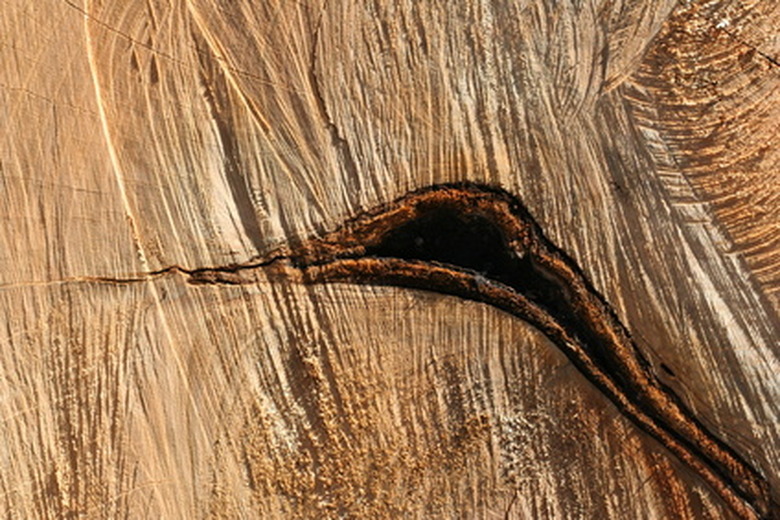Trees & Rust Fungus
Rust infections are a common occurrence in several varieties of trees, including apple trees. Often caused by the fungi Gymnosporangium or Melampsora, this disease can cause serious damage to the tree, including defoliation and the death of fruit on the tree. Control of the disease requires equal amounts of cultivation and chemical control.
Symptoms
Symptoms of rust fungus vary among tree varieties, most showing signs in both leaves and bark. Rust infection causes spots on the leaves. These will appear yellow in color, growing in size. Eventually, the spots turn orange, like rust. Orange, gelatinous horns also appear on the branches, which are called galls.
- Rust infections are a common occurrence in several varieties of trees, including apple trees.
Spreading
Rust infections spread by fungal spores. These spores appear on the orange-colored galls that appear on the branches of the tree. Wind blows the spores from one tree to the other, completing the life cycle of the fungus. In the case of cedar-apple rust, the fungus travels between the ornamental cedar plant Juniperus spp. and the apple tree. The spread of fungi spores by wind makes control incredibly difficult.
Effects
Many rust diseases do not cause significant damage to the health of the tree. Cedar-apple rust is frustrating to orchard owners as it destroys fruit and ruins production over time. Repeated infections of many trees causes a general weakness in the tree, making it more susceptible to winter diseases, insects and infectious pathogens.
- Rust infections spread by fungal spores.
- Repeated infections of many trees causes a general weakness in the tree, making it more susceptible to winter diseases, insects and infectious pathogens.
Cultivating Management
Planting of juniper plants near apple or crabapple trees should be avoided to prevent infections of cedar-apple rust. New trees should be planted away from older orchards infected with the disease. If possible, plant resistant plant varieties to prevent infection.
Chemical Management
Application of pesticides will prevent rust infection when plants are in a high-rust-incident area. Fungicides labeled with rust control should be used for the plant you are trying to protect. In the case of cedar-rust varieties, fungicides should be applied to the host plant, juniper, before the orange spore horns appear, and repeated every 10 to 14 days.
